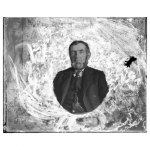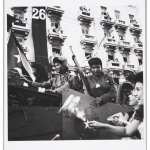In November 2014, after the three stalwarts of the Boston art scene–the Fogg Museum, Busch-Reisinger Museum, and Arthur M. Sackler Museum–became one institution under the Harvard Art Museum, a smaller, experimental gallery launched within its walls under the masterful direction of Harvard’s metaLAB, “an idea foundry, knowledge-design lab, and production studio dedicated to innovation and experimentation in the networked arts and humanities.” The space was designed to push the boundaries of an otherwise traditional museum space through, “digital experiments and new media projects that respond to collections held at the Harvard Art Museums.”

The entirety of the room is covered with screens, projectors, network jacks and various other necessities that would make any experimental artist salivate. But what might make this gallery most exciting is the juxtaposition of next-generation tech, and the traditional artworks of the museum.
Nothing feels more well-suited to this surprising marriage than the upcoming video exhibiton “YOUR STORY HAS TOUCHED MY HEART,” opening May 23. The exhibition highlights the truly extraordinary American Professional Photographers Collection, over 20,000 photographs depicting American life in the late 19th and early 20th century.
The photographs depict the hopes and dreams—and fears—of Americans as they imagined themselves at their best. Your Story Has Touched My Heart combines these photographs with new video footage, sound, and fragments of text that put the work in dialogue with memory, individuality, ephemerality, and the meaning of visual abundance as these images find their way in the digital realm.
– metaLAB
A special screening will be held on May 25, followed by a discussion of the video and corresponding works by the metaLAB’s Matthew Battles and Sarah Newman, in concert with one of the APPC’s curators, Professor Kate Palmer Albers.
The 20,000+ collection is impressive both in its size and the consistent quality of the photos and negatives. To gain more exposure before the event, follow our Boston Bot on Twitter, and receive periodic links to images in the collection!







